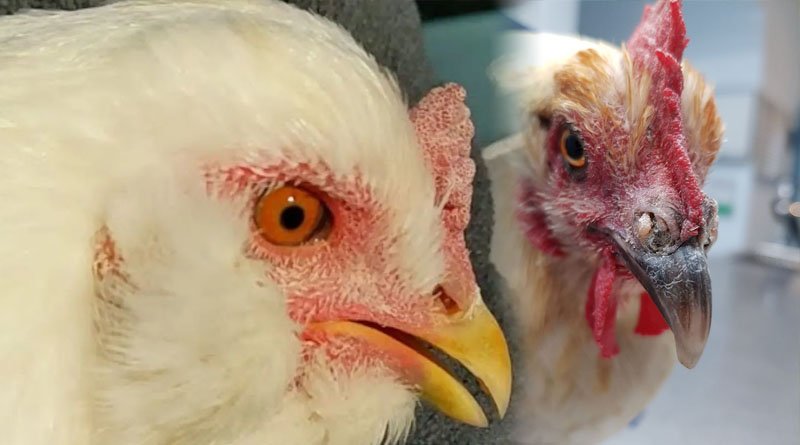Mycoplasma gallisepticum is known to cause chronic respiratory disease (CRD) in chickens. The symptoms of CRD include sneezing, coughing, nasal discharge, and difficulty breathing.

Mycoplasma is a genus of bacteria that lacks a cell wall and is known to cause respiratory diseases in chickens. The Mycoplasma genus is further divided into several species, including Mycoplasma gallisepticum (MG) and Mycoplasma synoviae (MS), which are the two most common species that affect chickens.
Mycoplasma bacteria infections in chickens are common in commercial poultry farms, and they can cause significant economic losses due to reduced egg production, decreased weight gain, and increased mortality rates. These infections can also lead to secondary bacterial infections, which can further complicate the disease and increase the severity of the symptoms.
Mycoplasma gallisepticum (MG) is known to cause chronic respiratory disease (CRD) in chickens. The symptoms of CRD include sneezing, coughing, nasal discharge, and difficulty breathing. MG can also cause conjunctivitis, which is characterised by inflammation of the eyes and swollen eyelids.
In severe cases, MG can cause airsacculitis, which is the inflammation of the air sacs in the lungs. Mycoplasma synoviae (MS) is another species that causes respiratory disease in chickens. MS infections can cause swollen joints, which can be painful for the birds and can lead to decreased mobility.
The symptoms of MS infection are similar to those of MG infection, and infected birds may also exhibit respiratory signs such as sneezing and nasal discharge. Mycoplasma infections in chickens can be transmitted through direct contact with infected birds or contaminated surfaces, as well as through the air. Infected birds shed the bacteria in their nasal and ocular secretions, as well as in their faeces.
The bacteria can survive for several days in the environment, making it easy for other birds to become infected.
Clinical Signs and Symptoms: The clinical signs of MG infection in chickens can vary depending on the severity of the disease. In mild cases, infected birds may show no signs of illness. However, in more severe cases, birds may exhibit respiratory distress, including sneezing, nasal discharge, coughing, and wheezing.
Infected birds may also experience decreased egg production, reduced hatchability, and increased mortality rates. In some cases, MG infection can lead to secondary bacterial infections, which can further exacerbate the clinical signs of the disease.
Diagnosis and Treatment: Diagnosing MG infection in chickens can be challenging, as the clinical signs of the disease can be similar to those of other respiratory diseases. However, there are several diagnostic tests that can be used to confirm a diagnosis of MG infection.
These include serological tests, such as the enzyme-linked immunosorbent assay (ELISA), and molecular tests, such as the polymerase chain reaction (PCR). These tests can detect the presence of the bacterium in blood or tissue samples.
Treatment of MG infection in chickens typically involves the use of antibiotics, such as tetracyclines or macrolides. However, the use of antibiotics can be controversial as they can lead to the development of antibiotic-resistant strains of the bacteria.
In addition, some antibiotics may not be effective against all strains of MG, and some strains may be resistant to multiple antibiotics. Therefore, it is important to use antibiotics judiciously and implement other control measures to prevent the spread of the bacterium.
Prevention and Control: Preventing and controlling MG infection in chickens requires a multi-faceted approach. One of the most important measures is to maintain strict biosecurity measures, such as keeping birds in clean and sanitary conditions, limiting visitor access, and implementing proper disinfection protocols.
In addition, vaccination can be an effective way to prevent MG infection in chickens. There are several commercially available vaccines that can be used to protect birds against MG infection. However, vaccination may not be effective against all strains of the bacterium, and some birds may not respond to vaccination.
Conclusion: Mycoplasma gallisepticum is a bacteria that can cause respiratory diseases in chickens and turkeys, as well as egg production losses and reduced hatchability.
Diagnosis and treatment of MG infections can be challenging, and prevention and control measures are key to reducing the spread of the bacterium. Biosecurity measures, vaccination, and judicious use of antibiotics can all be effective in preventing and controlling MG infection in chickens.
This article is jointly Authored by Dr. Atif Rehman and Abdul Samad from Department of Poultry Science FVAS MNS University of Agriculture Multan.
